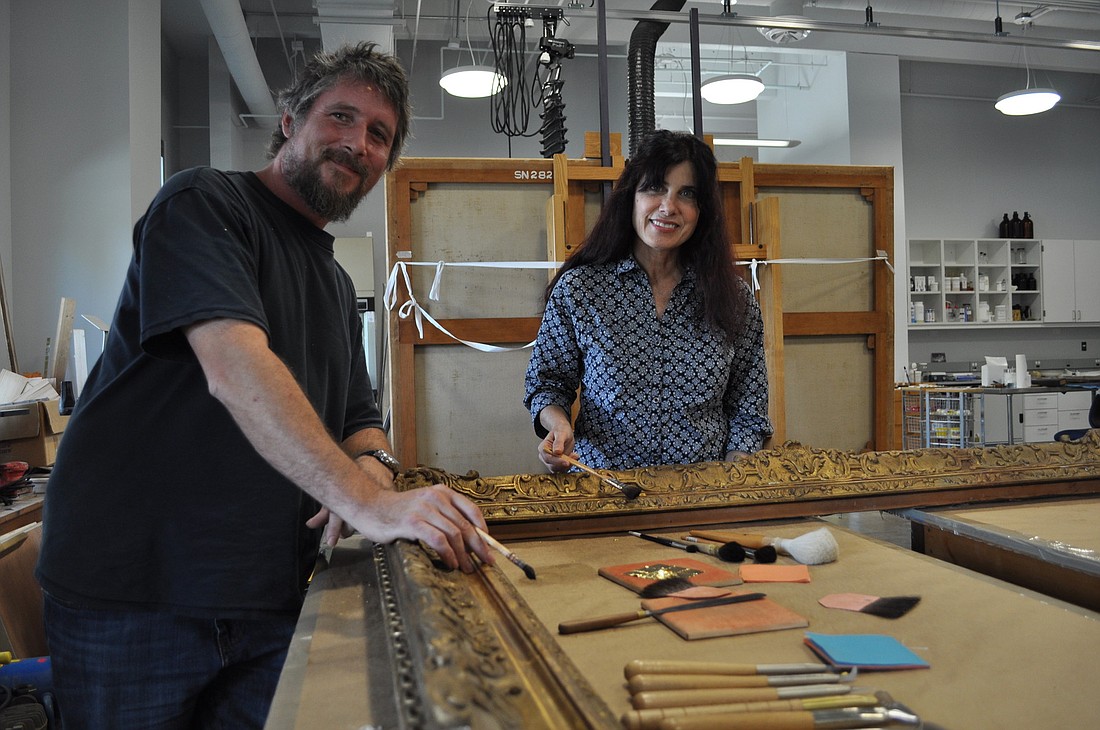- November 28, 2024
-
-
Loading

Loading

The term “art appreciation” takes on a whole new meaning when you walk inside the conservation laboratory at the John and Mable Ringling Museum of Art.
The words “scrupulous” and “painstaking” also come to mind, not that conservationists Michelle Scalera and David Piurek ever use either one. They love what they do, and there’s a reason they do it.
“You have to enjoy meticulous work,” say Piurek, gesturing toward a work by 17th-century Flemish painter Erasmus Quellinus II that Scalera spent months cleaning with Q-tips.
Scalera launches into an explanation of why she prefers to make her own Q-tips and what cleaning materials work best for what paintings.
“I always start with the mildest solvent,” she says. “What we found with this painting was that it was pretty much sprayed with wax.”
Scalera guesses it was sprayed with wax to combat pest infestation — a common threat to artwork kept in storage. To articulate her point, she pulls out a picture of what the painting used to look like before she began rubbing off layers and layers of wax.
In the before shot, the colors are dull, muted and brown-toned. In the after shot, they’re vibrant and intense.
“The credo is reversibility,” Scalera says. “Everything we do has to be reversible.”
“And you never want to over-clean something,” Piurek adds. “You want to make it so your eye doesn’t see the seam between old and new.”
The 4,000-square-foot conservation lab, which is located inside the museum’s education building, is twice the size of the museum’s old lab. It’s outfitted with a varnishing spray booth the size of a small garage.
Despite its size, the booth is still not large enough to fit one of the museum’s most monumental pieces — an equestrian portrait by 18th-century painter Thomas Gainsborough.
Scalera and Piurek seem to find the beauty in almost every project that comes their way, including the eight months they spent restoring 40 Gothic pieces pulled from Ringling’s Gavet-Vanderbilt collection, which was shipped off this spring to the Marble House mansion, in Newport, R.I.
The project was like a treasure hunt. The pieces date back further than the 1500s, including a relief sculpture with a headless Madonna and a three-sided crumbling pedestal that was found locked without a key.
“A lot of people might have thrown these things in the dumpster,” Piurek says. “When you see something like this that’s been in storage all dirty and nasty and forgotten about, it’s a privilege and a challenge to have the ability to clean it up and replace the missing elements.”
Scalera has worked as a conservator at the museum for an impressive 29 years. Piurek has been on staff for 13 years, first as a museum preparator and now as a conservation technician and guilder.
For a two-man department entrusted with conserving priceless pieces of art on tight exhibition deadlines, Scalera and Piurek rarely bicker.
Eleven years ago, Scalera was varnishing “The Triumph of Divine Love” in the Rubens gallery when Piurek lent a hand.
It was after-hours and Scalera was operating the spray gun from the top of a crane lift. She needed help refilling her varnish.
They were wearing raincoats — a necessity when spraying a work as large as a Rubens.
“We were soaked in varnish,” Scalera says. “After that, we knew we were a good team.”